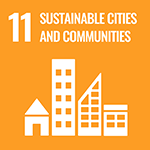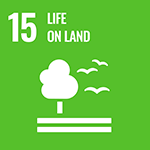Visualization of Impact of Chronic/Latent Chemical Hazard and Geo-Ecological Remediation
Principal Investigator


Prof.
Vice Chancellor, The University of Zambia
Luke E Mumba
ODA Recipient Country
Republic of Zambia
Research Institutions in Japan
Hokkaido University
Research Institutions in Counterpart Country
University of Zambia
Adoption fiscal year
FY 2015
Research Period
5 Years
Overview of the Research Project
Optimizing contaminant removal methods, quantifying economic effects based on health risk assessments
In Zambia, where lead (Pb) contamination is a serious problem, we are working to elucidate the contamination mechanisms and risks posed to the ecosystem and humans. Then, by visualizing the economic losses involved, we aim to link this to the development of contamination prevention measures and environmental remediation technologies. In addition to conducting studies by remote sensing, characterizing soil and plants through surface studies, identifying lead contamination mechanisms in humans, visualizing health hazards and economic risks, and establishing environmental remediation technologies, we will also work to construct monitoring systems and foster the sustainable development of experts in the necessary fields through capacity building initiatives.
Contribution to the reduction of contamination through environmental remediation and assessment of health and economic risks!
Through these initiatives, we aim to achieve a reduction in lead levels in the younger generation who will shape Zambia’s future (particularly infants), and the adoption of new protocols for environmental remediation and health risk assessment in Zambia as part of national policy. In future, we hope these efforts will ultimately contribute to countermeasures against metal pollution—a major global hazard that is primarily centered in Africa.
Photo gallery
Research Project Web site
Press Release
Links
Projects
Contact Us
Japan Science and Technology Agency (JST)
Department of International Affairs
SATREPS Group
TEL : +81-3-5214-8085
Related articles by Category
- Global-scale environmental issues
Environment / Energy
(Global-scale environmental issues)
 Kingdom of Thailand
Kingdom of Thailand
“Natural rubber seeds”, the unlimited potential hiding in natural rubber plantations
Utilization Technology of Rubber Seeds for Green Products to Mitigate Global Warming and Plastic Pollution
- Zambia
Environment / Energy
(Global-scale environmental issues)
 Republic of Zambia
Republic of Zambia
Experienced, not taught - Realizing safe water, sanitation and hygiene in Africa
Risk-based Participatory WASH Planning and Citizen-data WASH Statistics for African Peri-urban Settlements
- Africa
Bioresources

 Republic of Zambia
Republic of Zambia
Collaboration Between Farmers and Scientists Enables Rapid Development and Dissemination of Rice Varieties!
The Establishment of an Immediate Rice Variety Development System using Anther Culture and Citizen Science
- SDGs : Goal.3
Environment / Energy
(Global-scale environmental issues)
 Kingdom of Cambodia
Kingdom of Cambodia
Develop human resources to solve air pollution problems in Cambodia! Observation, analysis then countermeasures
Establishment of Risk Management Platform for Air Pollution in Cambodia























